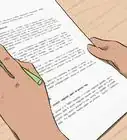This article was co-authored by Shannon O'Brien, MA, EdM. Shannon O'Brien is the Founder and Principal Advisor of Whole U. (a career and life strategy consultancy based in Boston, MA). Through advising, workshops and e-learning Whole U. empowers people to pursue their life's work and live a balanced, purposeful life. Shannon has been ranked as the #1 Career Coach and #1 Life Coach in Boston, MA by Yelp reviewers. She has been featured on Boston.com, Boldfacers, and the UR Business Network. She received a Master's of Technology, Innovation, & Education from Harvard University.
There are 17 references cited in this article, which can be found at the bottom of the page.
wikiHow marks an article as reader-approved once it receives enough positive feedback. In this case, several readers have written to tell us that this article was helpful to them, earning it our reader-approved status.
This article has been viewed 249,307 times.
A resume and a CV (curriculum vitae) are — for most purposes — the same thing. They both provide the reader with an overview of your educational and experiential background. In some cases, a resume or a CV may also include information such as: skills and abilities; certifications or designations; language fluency; and awards and achievements. In general, a resume or a CV for a cabin crew position (i.e. flight attendant) is not very different from most other highly-skilled jobs. The important thing is that it be clear, concise, and free from errors.
Steps
Reviewing Cabin Crew Job Postings
-
1Review airline career websites. Before updating or creating your new resume, take the time to review websites for airlines you’re interested in working for. Because it’s an airline, the main webpage may be directed towards the customer, but most of these websites will have a “careers” link somewhere near the bottom of the main page.
- Read through the general career information provided by the airline.
- Look for information about the type of people they look for, and the type of culture the organization has (or encourages).
- For example: British Airways career website includes key statements like:[1]
- “A real team player, you’re passionate about people and driven to delight every customer.”
- “… you’re always ready to adapt to change and innovation."
- “Your enthusiasm for creating great experiences means you’re totally engaged with everything from health and safety to our products and services."
- Both career websites provide an excellent selection of keywords you should consider including in either your resume or your cover letter (or both).
-
2Find current job postings for cabin crew positions. The same career websites that contain general information about the organization should also include a list of available positions. Use the associated search function to look for open cabin crew positions at the airlines you’re interested in.[2]
- Remember that not all airlines will call their cabin crew positions the same thing. Make sure your search criteria includes any positions that may be considered a cabin crew position by that organization.
- Many career websites provide the user with the ability to create an account so they can setup notifications. You’ll be able to tell the system what types of jobs you’re interested in, and the system will send you an email notification when those types of jobs become available.
- Pay specific attention to areas of the job posting that include specific requirements and qualifications.
- Also pay attention to keywords used throughout the job posting that you can use in your resume or cover letter.
- For example: The British Airways job posting for a Cabin Crew member includes the following important points:[3]
- "You genuinely enjoy customer interactions and place the customer at the heart of everything you do."
- "You appreciate the need to work in a timely fashion and appreciate the need for punctuality."
- "You are able to lift a weight of 9kg (20lb) from a height of 195cm (78”), this is the equivalent of lifting a medical kit from and aircraft overhead locker."
Advertisement -
3Determine which airlines you want to focus on. As you will probably find, not all airlines are equal. While they all provide essentially the same type of service, they provide that service very differently. You need to decide which airlines you prefer, and which airlines you do not want to work for.
- Do not feel you need to apply for jobs at all airlines just to get your foot in the door. Pick only the airlines you feel you could work at for a long period of time happily.
- If the airline’s career website doesn’t give you a good enough view of the organization, consider speaking to someone who works at that airline. Since many of this positions are customer-facing, it wouldn’t be hard to find someone to speak to even if you don’t know anyone already.
- Narrow down the list of airlines you want to apply to and spend more time reviewing the website and job postings from those airlines.
-
4Keep specifics in mind when writing your resume and cover letter. When writing each section of your resume, keep the keywords and terms you’ve found in mind. Incorporate as many of these keywords as you can, but don’t use ALL of them. Incorporate some of your own creativity into your resume and cover letter as well.
- Profile Summary — incorporate some of these adjectives into your description of yourself. For example, instead of “experienced flight attendant with 5+ years of service,” put “compassionate in-flight crew member with over 5 years of dedicated and energetic experience."
- Core Competencies— incorporate both the adjectives and specific requirements into your list of skills and abilities. For example, instead of “hands-on experience in delivering onboard services while remaining in the boundaries defined by airline policies and protocols,” use “passionate about delivering a memorable and relaxing flight for all passengers by providing excellent service based on the airline’s safety procedures."
- Previous Experience — use the keywords and terms from the job positing to explain how you performed your previous jobs. Don’t worry if your previous experience isn’t airline-related. For example, if the job posting indicates that they want an ‘effective communicator,’ incorporate that term into your previous experience. Instead of saying “provided directions to local restaurants,” use “communicated directions to local points of interest."
Elaborating on Your Previous Experience
-
1Gather all information about your past jobs. Your previous experience section needs to list all your prior job information, including: your job title; the department within the organization where you job was; the name of the organization where you worked; the city, state and possibly country where the job was located; the month and year you started the job; the month and year you left the job; a list of tasks you completed; and a list of responsibilities you had.[4]
- Make a list of all your past jobs and gather all the required information.
- Include items as far back as possible. You can edit and remove unneeded jobs later if you need to.
- When listing your previous experience on your resume, put the list in order of most recent to least recent.
-
2Make a list of what you did for each of your past jobs. Once you have a list of all the past jobs you’ve had, make a detailed list of the tasks, activities and responsibilities you had for each one. The purpose of this list is to provide potential employers with an idea of the types of things you have experience with. But the list should be written in a clear, concise manner that accentuates the positive and results-based responsibilities you had. Rewrite your list using the following guidelines:
- Use a present-tense verb at the start of each point for the job where you are currently employed.
- Use a past-tense verb at the start of each point for the jobs where you no longer work.
- It is helpful for each point to include WHAT you did and WHY you did it.
- Examples of job description points are as follows:
- Welcomed passengers as they arrived and checked their tickets (the ‘what’) to ensure that they are on the correct flight (the ‘why’).[5]
- Demonstrated the use of safety equipment such as oxygen masks and provided advice on what to do during emergency situations.
- Provided support to passengers who have missed their flights by arranging for them to embark on the next available flight.
- Walked aisles of the plane to verify that passengers were in compliance with federal regulations prior to take-off and landing.[6]
- Oversaw work performance of flight crew during flights and consulted with cockpit and cabin crew for travel briefings.
-
3Decide which jobs you need to leave out. Since you have limited space on your resume, you may not be able to include all your past experience. In most cases, it is unnecessary to include jobs held during high school, unless it was a job that is specifically related to the airline industry.[7]
- There are three ways to reduce the amount of space taken by the previous experience section:
- One, you can reduce the number of points included for each job.
- Two, you can remove all the points from the oldest jobs and only include job titles.
- Three, you can remove your oldest jobs completely.
- There are three ways to reduce the amount of space taken by the previous experience section:
Adding Your Education & Certifications
-
1Write out your education, training, and certifications. Another important section of any resume is the education section. This section should include any post-secondary education, training courses, or workshops you've attended. In most cases it will not be necessary to include high school unless you do not have any post-secondary education.[8]
- Write down all the education you’ve received since high school.
- For each education entry, you will need the following items: institution name; institution location; program start and end dates; degree, diploma or certificate program in which you were enrolled; and major (if applicable).
- You will need to indicate which programs you completed with a graduation date. You may wish to exclude programs you started but didn’t finish if an incomplete program would cause too many questions.
-
2Add achievements if relevant. If you received a specific award, scholarship or honour at any of the institutions you attended, include that information on your resume.
- If you received 3 items or less, include your achievements as point forms under the appropriate education entry.
- If you received more than 3 awards, scholarships or honours, create a separate section where you list these items. If you create a separate section, include the name of the award plus the year you received it.
-
3Include important qualifications that make you stand out. Important qualifications would include: certifications you have (e.g. CPR, AED, etc.); languages in which you are fluent; associations to which you are a member; and any special interests that might make you stand out. Certifications are especially important if they are required for the job to which you are applying.
- If you are including certifications that have an achievement date (and an expiry date), include the month and year on your resume. List these certifications from most to least recent.
- Special interests could include things such as: volunteer activities, talents (e.g. piano player, ballroom dancer, etc.), and anything else that might start an interesting conversation in an interview.
Developing Your Profile & Core Competencies
-
1Understand what a profile summary includes. A profile summary may also be called summary, profile, professional highlights, qualification summary, etc. Choose whichever title you like best. The profile summary includes a very brief description, in paragraph form, about yourself. It should highlight some of your best qualities and features.[9]
- This paragraph is at the top of your resume, so it’ll be the first thing an employer reads other than your name. As such, it should stand out and grab their attention.
-
2Draft your profile summary. Your profile summary requires input from all sections of your resume, which is why it’s best to write it last. You need to summarize your abilities and experiences into 3-5 concise sentences that describe you as the perfect candidate to be a flight attendant.
- If you have no prior experience as a flight attendant, your summary should focus on the transferrable skills you have that can be applied to a flight attendant position.
- If you have prior experience as a flight attendant, your summary should include specific examples from your previous experience.
- Example profile summaries for an experienced flight attendant:
- Top-performing flight attendant with a 7+ years’ solid track record of providing exceptional services to passengers. Well-versed in carrying out pre and post flight checks to ensure constant passenger service and safety throughout the flight.[10]
- Customer service specialist with 5+ years providing exceptional service to hotel patrons. Proficient in serving patrons from domestic and international destinations with dedication and patience. Experience assisting patrons during emergency situations while staying calm and collected.
-
3Create a list of your skills, abilities, and strengths. The best place to start creating your this portion of your resume is to grab a notebook, sit down, and think about your skills, abilities, and strengths. Most skills and abilities can be considered universal, which means they can apply to any job to which you apply. Other skills and abilities may be specific to a job or industry, for example flying a plane, programming a computer, fixing an engine, etc. For your cabin crew resume, use transferrable skills, abilities and strengths, or skills that are specific to the airline industry.
- Some examples of strengths are: adaptability, analytical, communication, consistency, empathetic, positivity, responsible, self-assured, strategic.
- Some examples of skills and abilities are: ability to work under pressure, attention to detail, conflict resolution, delegating, diplomacy, problem solving, mediation, persuasion, patience, customer service, reliable, taking initiative, teamwork, creative.[11]
- In addition to the above listed skills and abilities, remember to include any industry-specific skills that are more general in nature. For example, many job ads for cabin crew members may require the candidate to be able to life up to 50 pounds. Ensure you include the fact that you are able to life up to 50 pounds in this section so hiring managers are aware you meet these general requirements.
-
4Expand on your core competencies in more detail. A core competencies section is similar in nature to your profile summary, except it’s in point form and provides slightly more detail. This is a section where you can expand on your skills a little more, and include more detail. It is not a required section, but can be used to provide additional highlights after your profile summary and before your previous experience section.[12]
- Your core competencies section can be developed in two ways. A point form list of skills one to three words long. Or a list of 3-5 points explaining your skills in more detail.
- A short list may include the following items:
- Pre/Post Flight Checks
- Cabin Security
- Meal Service
- Inventory Management
- Special Needs Assistance
- Emergency Response
- A point form list of sentences may include the following items:[13]
- Competent at providing leadership by responding to a variety of onboard emergency and non-emergency situations.
- Hands-on experience in delivering onboard services while remaining in the boundaries defined by airline policies and protocols.
- Proven ability to communicate technical information to passengers in a precise and customer-friendly way.
-
5Develop a personal tagline. One creative way to make your resume stand out against many others is to develop your own tagline or motto. Doing this may take some time, but is worth it in the end. Some example taglines are as follows:
- Dedicated to Making Each Passenger’s Trip Completely Memorable Through Impeccable Service[14]
- High-end service provider giving the sophisticated traveller a stylish and tailor-made experience on every flight.
Producing a Final Product that Stands Out
-
1Format the final product. You have several options for how to format your final resume. But there are several guidelines that are common between all resumes that you should follow when formatting your resume. The exact format you use for each section is up to you because there are so many choices. Search the internet for samples and use the format you like best. It’s okay to be a little creative. Create several versions if you’re unsure which format you prefer, then compare the printed versions.[15]
- Your name should be the first thing on your resume, in the largest font. To make things easier to format, put your name and other contact info in the header. This also ensures it gets repeated on a second page, if you have one.
- Your contact information comes after your name, and should also be placed in the header. Your contact information should be in a smaller font than your name.
- Your tagline (if you have one) should come next, immediately under the header. Ideally it should be written in a font that stands out, possibly even bolded if it looks good.
- Your summary, objective, profile summary, qualifications, etc., should come after your tagline. This section should have a section heading.
- If you decide to include a core competency section, it should come after your summary section. Core competencies also needs a section heading.
- Your professional experience should come next, and should also have a section heading.
- Your education should come after your professional experience, and will need a section heading.
- If you decide to have separate sections that outline additional qualifications, interests, awards, etc., you can place them as the last section on your resume.
- Put the statement “References Available Upon Request” in the footer, if you decide to include it.
- If you’re resume is longer than 1 page, include the page numbers in the footer. It’s helpful to put the page number and the page count together (1 of 2), rather than only the page number (1).
-
2Use industry keywords. When writing each section of your resume, use words that are specific to the airline industry. Also, if you have specific jobs in mind already, use keywords from those job ads in your resume (and cover letter).
- Another purpose to keywords is if your resume is put into a searchable database, or posted online. Many large organizations scan resumes into databases for storage. When a job becomes available, they’ll search the database using specific keywords.
- Keywords are also important if you post your resume online. Airline recruiters may search these websites using keywords to find the best candidates.
- While you won’t necessarily know what keywords each airline may use for every search, you can be assured many of those keywords will also be found in their job ads. Reviewing multiple job ads for the airline industry before completing your resume is a valuable task.
-
3Keep your resume to a maximum of 2 pages. The final version of your resume should be no more than 2 pages in length. If printed, it should be printed double-sided so it only takes up one piece of paper. If your resume doesn’t fill 2 pages, attempt to reduce it to one page.[16]
- There are many formatting tricks you can employ to reduce your resume to 1-2 pages if needed. They include:
- Decrease the size of the margins, but don’t go smaller than 1”.
- Reduce the space allocated to headers and footers. Reduce the text in the headers and footers to fewer lines.
- Reduce the font used in the headers and footers to 8-10 pts.
- Reduce the font used on the resume to 10-12 pts.
- Alter the font size between section headings and section text. For example, use 12 pt font for headings and 10 pt font for text.
- There are many formatting tricks you can employ to reduce your resume to 1-2 pages if needed. They include:
-
4Ensure your contact information is accurate. Your contact information should include your: name (first and last at a minimum); full address (including city, state/province, and zip/postal code); phone number; and email address. Include only one phone number and email address. Double-check that all your personal information is accurate as there is nothing worse than an employer wanting to interview you, but having the wrong number.[17]
- Make sure the phone number you provide have the ability to record messages.
- Review the answering message on all the phone number you provide to ensure it is professional. If it’s not professional, record a new message.
- Do not include email addresses that you have no control over, such as an existing employer. If necessary, create a new, free email account only for your resume and forward it to the email address you use most.
- Do not use email addresses with unprofessional names, e.g. sexymama@gmail.com, etc. Create a new email account if you need a professional email address.
-
5Be careful with the font. There are a lot of awesome fonts available for free online, but a large portion of them are not appropriate for resumes. The font on your resume should be clear and easy to read. While you can use multiple fonts, limit your font selections to a maximum of 2-3. Use one font for all text, and another font for section headings. If you want to add a third font, use it for your contact information or your tagline.[18]
- The most recommended fonts for resumes are: Garamond (classic), Gill Sans (simple), Cambria (clear), Calibri (simple), Constantia (friendly), Lato (friendly), Didot (classy), Helvetica (contemporary), Georgia (clear), and Avenir (crisp).[19]
- The worst fonts to use for a resume are: Times New Roman (overused), Futura (impractical), Arial (overused), Courier (unprofessional), Brush Script (overused), Comic Sans (childish), Century Gothic (impractical), Papyrus (cliche), Impact (overpowering), and Trajan Pro (impractical).
-
6Do not include references. You will need to have references available for potential employers to contact. But you should not provide that information unless explicitly asked. You can, however, include the words “References available upon request” on your resume, but it is not required. It is safe to assume that most employers will expect you have references, so you do not need to mention it on your resume.[20]
- You should, however, have all your reference names and contact information (phone number and email address) ready to send before you apply for a cabin crew job.
- You must ensure the people you give as your references are willing to be your references. And that they have something positive to say about you. Ask them first. And inform them of what types of jobs you’ll be applying to.
-
7Check all spelling and grammar - twice. Errors and typos on a resume really stand out. A resume is being used to judge you as a potential employee, and errors may make you appear to be a bad hiring choice. If a hiring manager is looking at a large pile of resumes, they may immediately discount any resumes that have errors and typos.[21]
- Use your computer’s spell check function first, but don’t rely on it as your only review method.
- Walk away from your resume for at least a day, then come back and re-read it.
- Print a copy of your resume and read it on paper. This helps ensure it looks good printed, but you may also be more likely to notice a mistake this way.
- Read your resume out loud. This method may help isolate when sentences don’t make sense.
- Review your resume from bottom to top. Because you’re reading your resume in a different way, your brain won’t automatically skim over things as easily as it would when reading it the ‘normal’ way.
-
8Have someone else review your resume. Have someone else read your resume before you finalize it. It can be anyone, they don’t have to be an expert on resumes. A fresh set of eyes may notice simple mistakes you've overlooked, and they’ll be able to tell you if there’s something that doesn’t make sense.[22]
- You can also have a career advisor review your resume. They’d be able to provide you with feedback around the format and content, but they’d also be able to point out simple errors and typos.
- If you’re currently attending a post-secondary institution, you will probably have free access to a career centre. Career centres usually have resume review services that are very helpful.
- The ideal situation would be to have a hiring manager from an airline review your resume for you. They’d be able to provide you with specific feedback on industry keywords and specific skills that would be looked for.
-
9Prepare a cover letter for each job application. A cover letter is a vital part of every cabin crew job application. The cover letter is where you’re able to customize your application to the specific job posting you’re replying to. It’s also your way to make an awesome first impression.[23]
- Your cover letter should tell your story, not list points.
- A cover letter should describe how specific skills and experiences you have can be applied to the specific job for which you are applying.
- Cover letters also provide a potential employer with an example of your writing skills and how well you can communicate.
References
- ↑ http://www.britishairways.com/careers/u-belong-cabin-crew.shtml
- ↑ http://www.britishairways.com/careers/vacancy_search_results.shtml?searchbusinessunit=5893
- ↑ http://www.britishairways.com/careers/vacancy_search_results.shtml?searchbusinessunit=5893
- ↑ http://flightattendantcentral.com/5-simple-steps-to-create-your-perfect-cabin-crew-cv/
- ↑ http://coverlettersandresume.com/flight-attendant/the-best-resume-of-flight-attendant/
- ↑ http://www.cvtips.com/resumes-and-cvs/flight-attendant-sample-resume.html
- ↑ http://career-advice.monster.com/resumes-cover-letters/resume-writing-tips/Tips-Create-a-Concise-Resume/article.aspx
- ↑ https://owl.english.purdue.edu/owl/resource/719/02/
- ↑ http://coverlettersandresume.com/flight-attendant/the-best-resume-of-flight-attendant/
- ↑ http://coverlettersandresume.com/flight-attendant/the-best-resume-of-flight-attendant/
- ↑ http://examples.yourdictionary.com/examples-of-skills.html
- ↑ http://coverlettersandresume.com/flight-attendant/the-best-resume-of-flight-attendant/
- ↑ http://coverlettersandresume.com/flight-attendant/skills-for-flight-attendant-cv-or-resume/
- ↑ http://workbloom.com/resume/sample/flight-attendant.aspx
- ↑ https://owl.english.purdue.edu/owl/resource/927/1/
- ↑ http://career-advice.monster.com/resumes-cover-letters/resume-writing-tips/one-page-or-two-page-resume/article.aspx
- ↑ http://thetempconnection.com/be-reachable-best-practices-for-resume-contact-information/
- ↑ http://www.businessnewsdaily.com/5331-best-resume-fonts.html
- ↑ https://designschool.canva.com/blog/resume-fonts/
- ↑ http://career-advice.monster.com/resumes-cover-letters/resume-writing-tips/Tips-Create-a-Concise-Resume/article.aspx
- ↑ http://www.washingtonpost.com/wp-dyn/content/article/2009/08/21/AR2009082104300.html
- ↑ http://www.washingtonpost.com/wp-dyn/content/article/2009/08/21/AR2009082104300.html
- ↑ https://owl.english.purdue.edu/owl/resource/549/01/
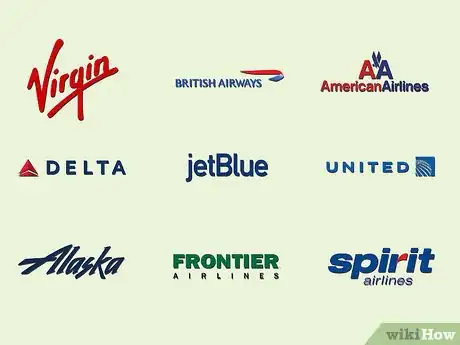
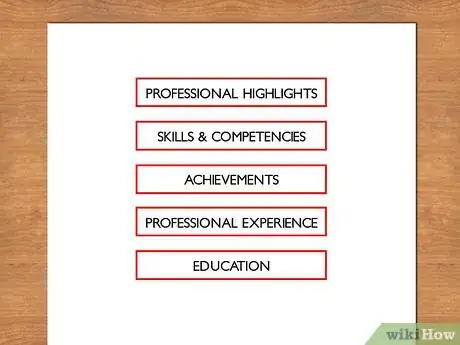

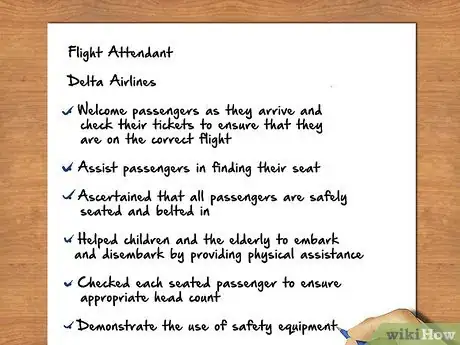
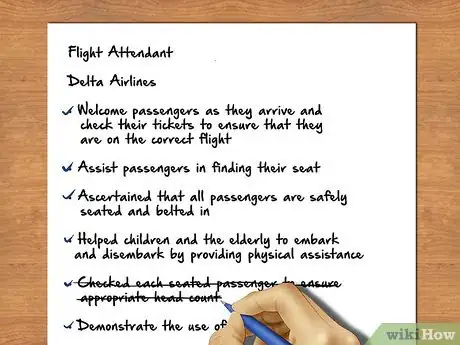
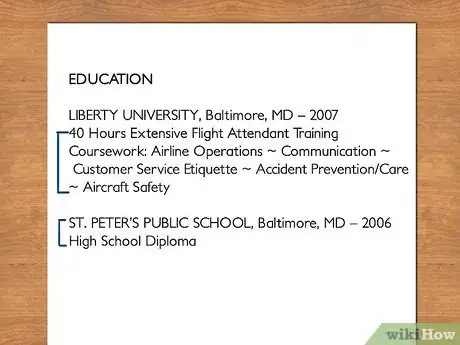
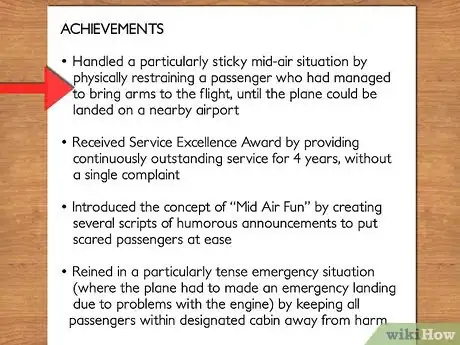

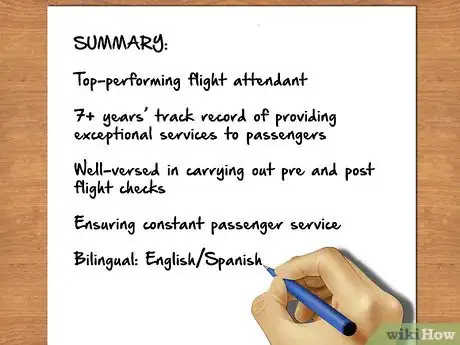
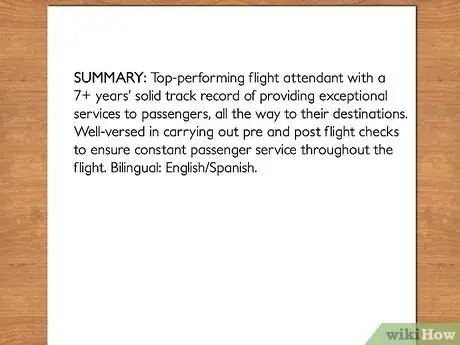
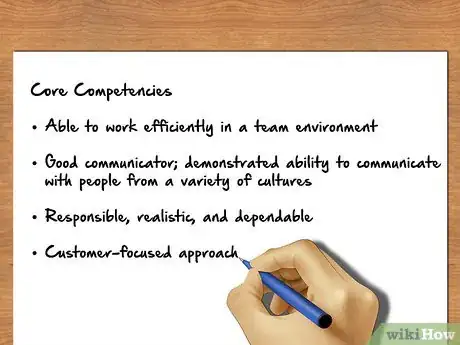
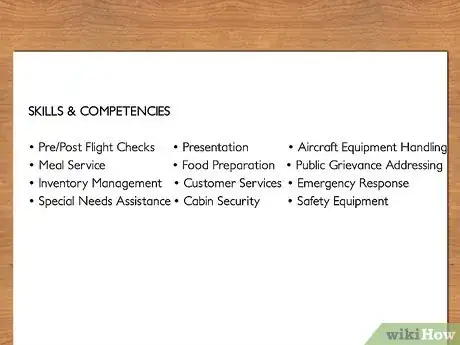
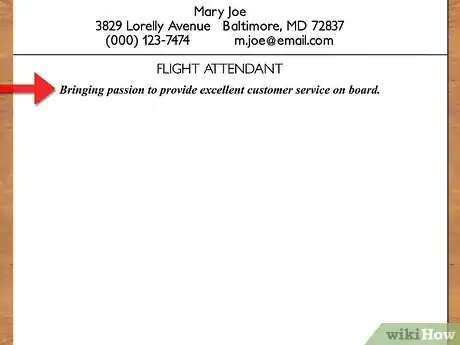
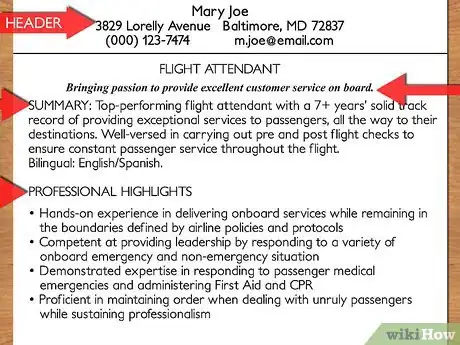

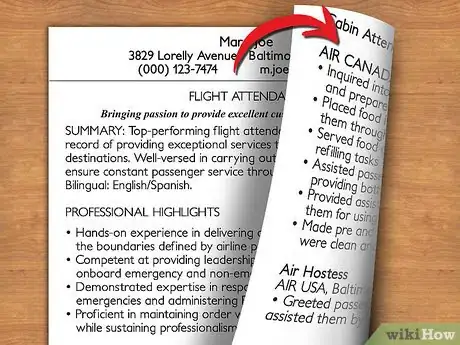
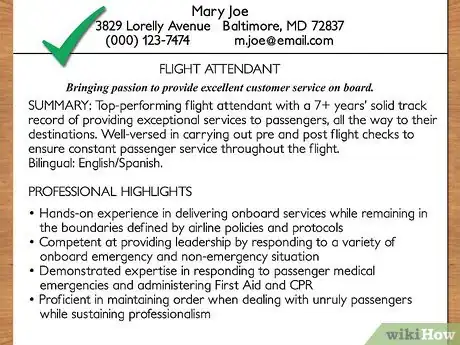
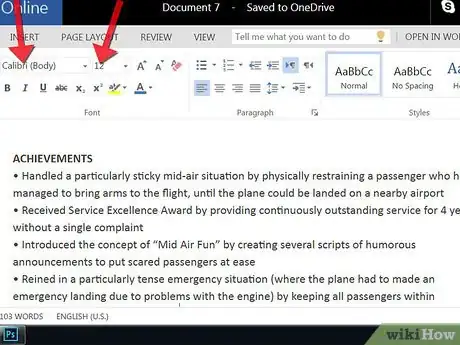
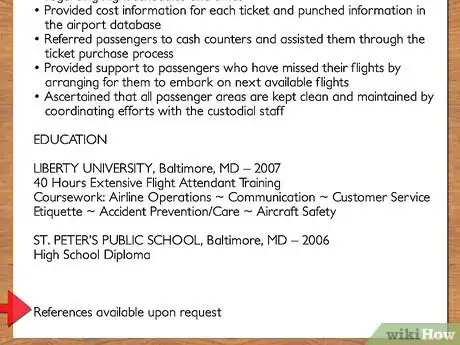
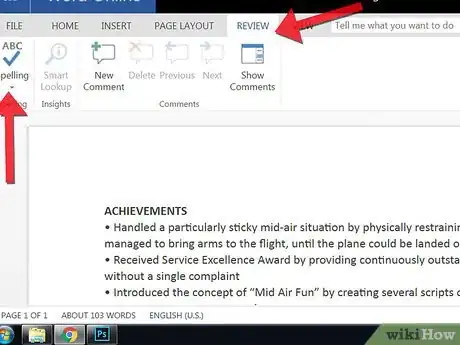


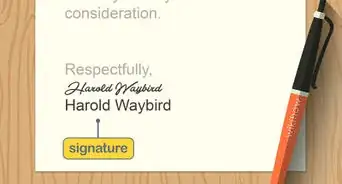
-Step-17-Version-3.webp)




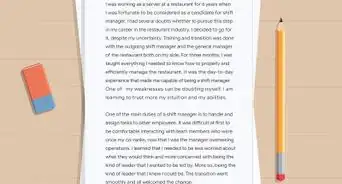
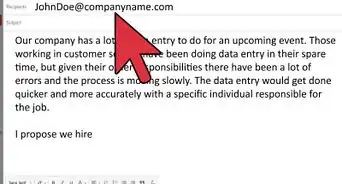

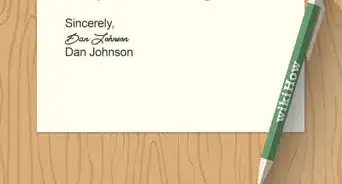


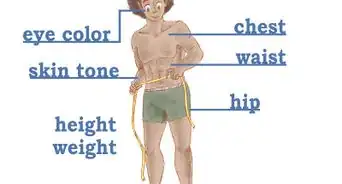
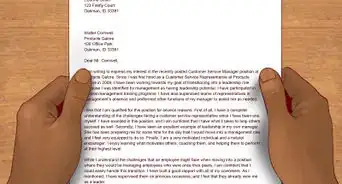










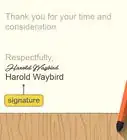
-Step-17-Version-3.webp)

